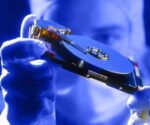Table of contents
An external hard drive is necessary for everyone since some files are simply too large to store on a computer’s internal storage. It’s smart to keep an external hard drive full of copies of our data in case something happens to our internal storage and our PCs.
Using external hard drives is a deliberate and prudent choice that we have made for several reasons.
Although more and more people are opting to store their data on the cloud, many still want to have a local copy for peace of mind.
External hard drives are convenient because they can store data indefinitely with no effort: connect it to your computer and then drag and drop files onto it.
True trouble begins when an external hard disc also turns on its owner and refuses to appear on the screen after being plugged in. A serious issue may arise if your external hard disc fails and you lose access to all of your priceless files.
Possible reasons behind your external hard drive not showing up
Your external hard drive might not be visible on the screen for a series of reasons, but pinpointing them might be tedious and frustrating. We have narrowed down the possible causes of this error to the following:
- Broken USB port or cable
- Driver issue
- Unsupported filesystem
- Partition problems on the external hard drive
In this article, we have offered 2 methods to go about fixing the issue of your external hard drive not showing up on the screen. Let’s get right to it:
Method 1: Send your external hard drive to a data recovery company
If you lose accessibility to your data stored in the external hard drive, the preferable resolution is always recovering all the data.
In that regard, the best and safest way to go forward is to hand your storage device over to a data recovery company.
They have all the right tools and technical know-how to safely recover the data while keeping your external hard drive in one piece.
There’s a common misconception that the data recovery company closest to you will suffice, when it comes to recovering lost data. Truth be told, much like any other specialty, problems are best dealt if handled by the best in the business. And the best will not necessarily be located in your vicinity. But the good news is, most of the data recovery companies the search results say have their offices nearby, are really just virtual offices. Make your way there and you will not find any physical office.
The best and most common method is to use a reputable shipping company to send your external hard drive to a top-tier data recovery firm. They are prompt and accountable, and you can have faith that only the most qualified experts in the area will be handling your data.
Word of Caution: Please note that this is the only method of data restoration. Following the steps below will cost you your data, but will get you your external hard drive a fresh new start.
Method 2: Restore the data DIY
Please remember that this method may lead to data loss; proceed at your own risk. There are 5 solutions that have been shown to work and maybe attempted at home on your own time. However, if you lack technological expertise, you should leave delicate concerns like data restoration to experts. Having said that, if you wish to go ahead with it yourself, here are the best ways:
Step 1: Check the Drive in Disk Management
Here’s how to go about it:
- Press Windows + X and type ‘diskmgmt.msc’ or right-click on Start and select ‘Disk Management’.
Your external hard drive often will not show up on your computer solely because it has no partitions. But it should be visible in your Disk Management as a removable device.
Step 2: Initializing a New External Drive
If you see the disk drive in Disk Management, do the following:
- Select the external disk drive and choose GPT (GUID Partition Table) if you see the MBR (Master Boot Record) option is selected, and vice versa.
- Click on ‘OK’ and you will be successfully formatting the drive and giving it a new beginning.
If you happen to see unallocated space, you will need to create new partitions for your computer to recognize the external hard drive. Here’s how to go about it:
- Right-click on the unallocated space and choose ‘New Simple Volume’.
- Follow the wizard to create a new partition.
- Assign a letter to your external hard drive.
- Choose ‘Format this volume with the following settings’ in the next window’.
- Click on ‘NTFS filesystem’, and let the allocation unit size be ‘Default’.
- Type in a volume label in the allocated space. Eg: Ext. Drive.
- Click on ‘Next’.
Once formatted, remove the drive and plug it back. It should be back in action.
Step 3: Assigning a Drive Letter to an External Drive
If your drive is already partitioned, but it still does not show up and has no letter allocated to it, it might help to assign it a new drive letter. Here’s how to go about it:
- Right-click on your hard drive and choose ‘Change Drive Letters and Paths’.
- Select the ‘Add’ option, and assign a letter.
- Click on ‘OK’.
Oftentimes, if your drive is partitioned but still does not show up, it might have an incompatible file system. For instance, you could have an XFS file system on Linux or an APFS file system on Mac, Windows will not read them.
In that case, you will have to choose either the newer NTFS system or, the older FAT-32 system and follow the same procedure for formatting the drive.
Step 4: Troubleshooting Broken USB Ports
Many times the problem is simply that your USB ports are damaged or broken and are thus not recognizing the external hard drive. Try plugging your hard drive into a different device or a different USB port to see if it works.
Step 5: Check for Driver Errors
If your USB ports are working fine, and your disk drive has both partitions and letter allocations, the problem might lie with your driver. Here’s what to do in that regard:
- Press Windows + X and type ‘devmgmt.msc’ or right-click on Start and choose ‘Device Manager’.
- Right-click on the driver with the issue, click on ‘Properties’ and you will be shown an error message with the exact issue.
If that does not work, updating the driver might help:
- Go to ‘Device Manager’.
- Expand on ‘Universal Serial Bus Controllers’.
- If you notice a red or yellow sign against a USB Mass Storage Device, right-click on it and choose ‘Update Driver’.
- Click on ‘Search automatically for updated drivers.’
- Follow the instructions to update the driver.
These are ways to give your external hard drive a fresh new start by yourself.
But if you wish to get your data back, the best and only way out is to hand over your drive to a data recovery company. Let their experience, skills, and knowledge do the deed.

